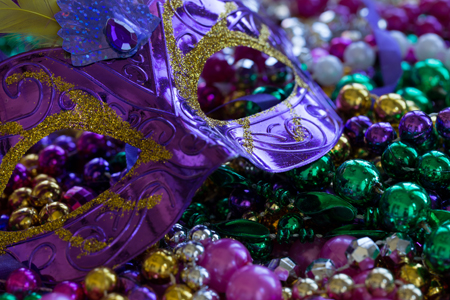
Masks, beads, floats, jazz music, beignets and king cakes can only mean one thing – it’s Mardi Gras.
Mardi Gras, French for Fat Tuesday, is always celebrated the Tuesday before Ash Wednesday and marks the end of the carnival season. It’s one of those interesting holidays that inter-twine raucous celebrations and somber religious observance.
Mardi Gras dates back to the 1700’s in Rome when the Christians would prepare a feast before fasting and abstaining from many indulgences throughout Lent. In the United Kingdom and Russian, they celebrate Pancake Day, and in the 16th century, the French celebrated Boeuf Gras (fatted calf) which included parading bulls decorated with flowers through the towns.
In the U.S., the first Mardi Gras parade occurred 177 years ago in New Orleans. Today, the faithful gather for parades, balls, music and non-stop celebrations New Orleans, the epic center for all things Mardi Gras.
Two elements synonymous with Mardi Gras are colorful masks and beads. Masks have been used since the 1700 and were used to protect the identity of the revelers. They also added an element of mystery and allowed the wearers to escape the constraints of society and class and be anyone they wished for a day. Because the celebrations at one point got a bit out of hand, from 1780-1827 masks were forbidden during the celebrations. Today however, float riders are actually required to where masks.
Bead colors are selected each year by the King of Mardi Gras, and doubloons are designs by the various Krewes (societies and neighborhoods) that are thrown during the parade. The typical colors of Mardi Gras are purple (justice), gold (power) and green (faith.)
Happy Mardi Gras and may you find the baby in the King Cake!
|